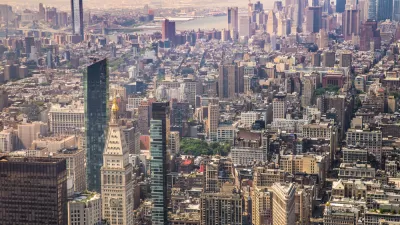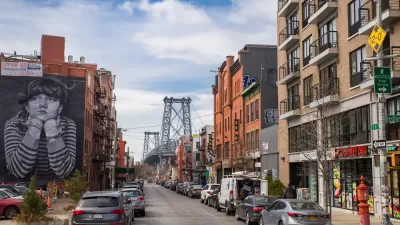With more short-term rentals on the market than apartments, New York City’s housing market is more competitive than ever.

“Ever since Airbnb came on the scene in 2008, there have been concerns that the short-term-rental company would deplete the housing stock by sucking up available rooms, causing prices to rise in cities like New York and San Francisco, where there were already severe housing shortages.” Now, according to an article by Kim Velsey in Curbed, new numbers from New York City show that there are more Airbnb listings in the city than apartments available for long-term rentals.
“There are just so few apartments to be had that Airbnbs make up the majority of the city’s available rentals,” Velsey writes. In April, “The net-effective median rent in Manhattan went up year-over-year to a new high ($3,925) at the largest rate on record, and listing inventory had the most significant annual decline on record.”
As for AirBnb, “The company has, for its part, always vehemently denied that it plays any role in the housing shortage, insisting that it provides income that helps people remain in expensive cities they’d otherwise have to leave.”
“Doesn’t that point to just how scarce all rentals are (except hotel rooms, that is)?” asks Velsey. “Well, yes, but with people fighting over every decent apartment that comes on the market, it’s worth taking note of how many apartments have been taken out of circulation to become short-term rentals.”
FULL STORY: New York Now Has More Airbnb Listings Than Apartments for Rent

Trump Administration Could Effectively End Housing Voucher Program
Federal officials are eyeing major cuts to the Section 8 program that helps millions of low-income households pay rent.

Planetizen Federal Action Tracker
A weekly monitor of how Trump’s orders and actions are impacting planners and planning in America.

The 120 Year Old Tiny Home Villages That Sheltered San Francisco’s Earthquake Refugees
More than a century ago, San Francisco mobilized to house thousands of residents displaced by the 1906 earthquake. Could their strategy offer a model for the present?

Alabama School Forestry Initiative Brings Trees to Schoolyards
Trees can improve physical and mental health for students and commnity members.

NYC Outdoor Dining Could Get a Re-Do
The city council is considering making the al fresco dining program year-round to address cost concerns from small businesses.

HSR Reaches Key Settlement in Northern California City
The state’s high-speed rail authority reached an agreement with Millbrae, a key city on the train’s proposed route to San Francisco.
Urban Design for Planners 1: Software Tools
This six-course series explores essential urban design concepts using open source software and equips planners with the tools they need to participate fully in the urban design process.
Planning for Universal Design
Learn the tools for implementing Universal Design in planning regulations.
Ada County Highway District
Clanton & Associates, Inc.
Jessamine County Fiscal Court
Institute for Housing and Urban Development Studies (IHS)
City of Grandview
Harvard GSD Executive Education
Toledo-Lucas County Plan Commissions
Salt Lake City
NYU Wagner Graduate School of Public Service





























